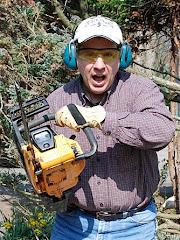Millions of Americans can watch that commercial and say, “Yeah, I get that. Ha ha ha.”
We are becoming a cashless society. Debit cards are accepted nearly everywhere, even McDonalds. One day we’ll be asked to show an ID to use currency.
 We are also becoming a self-serve society. Pay-at-the-pump self-service gasoline buying seems to be the norm. The self-serve checkout option has expanded to many grocery stores, Wal-Marts and even Lowe’s. Scan it yourself, swipe your card, leave.
We are also becoming a self-serve society. Pay-at-the-pump self-service gasoline buying seems to be the norm. The self-serve checkout option has expanded to many grocery stores, Wal-Marts and even Lowe’s. Scan it yourself, swipe your card, leave.I was thinking about this as I went to a Post Office to Express Mail an envelope today. The forms and envelopes are available on the counter in the lobby and there is a kiosk one can use to complete the process. However, I decided to stand in line to buy postage and mail my package because I wanted a real live breathing human to handle the transaction.
Is that an outdated preference?
I assume that self-serve technology is meant to serve two purposes: save time for the consumer and save costs for the company (which in theory would lower costs for the consumer). In this case, the technology would not have saved me any time. I was at the only Post Office in my county still open at 1pm on a Saturday, yet I was in and out of line in less than five minutes. The customer fumbling with the Express Mail kiosk when I entered the line was still fumbling when I left. I rarely use next-day shipping so I would most likely have been fumbling when it was my turn.
In addition to saving time using humans, the Postal Service human who handled my transaction asked me how I was doing, informed me that stamp prices are rising in May, thanked me for my transaction and wished me a wonderful weekend. The kiosk would have remained silent.
Before you call me old-school, I’ll point out that I used my debit card instead of cash. I nearly always use my debit card instead of cash. It’s easy, convenient and provides me a printed record of my transaction to help me feel guilty later for having purchased those items. It now seems unusual to use currency to buy anything selling for more than a few dollars.
Maybe I am old-school about self-serve checkout, however. I usually go to the register staffed by a person, in part because every time I have used the scan-it-myself checkout at Wal-Mart, a person had to fix a problem anyway. On my last visit to a Lowe’s or Home Depot, I purchased several items that the cashier had to match to photos for a price; that would have required human intervention at the self-serve checkout, so why bother?
Direct deposit and online banking is convenient but we never see a human bank teller. We can fly from DC to Orlando, from ticket purchase to luggage check-in to the flight itself (if we sleep during food service) without a single word of conversation with a US Airways employee.
Asimov’s robot books tell fascinating stories about the potential of machines with positronic brains doing all the work but the fiction is getting close to reality.
We are social animals yet we are rapidly reducing our points of human contact. The idea of helpful and time-saving do-it-yourself technology is not what bothers me. It’s the growing lack of human connection I don’t like.



















